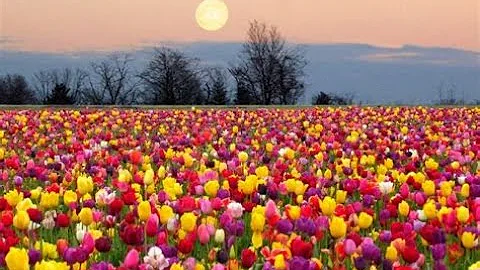Le mode Bulb en photographie: tout ce que vous devez savoir
Table of Contents
- Introduction 📷: Understanding the Basics of Bulb Mode in Photography
- What is Bulb Mode? 📸: Exploring the Functionality of Bulb Mode
- The Origin of the Term "Bulb Mode" 💡: Tracing Back to the Early Days of Photography
- Limitations of Standard Exposure Times ⏱️: Why You Might Need Bulb Mode
- The Importance of a Shutter Release Cable 🔌: Avoiding Camera Shake and Blur
- Using an Intervalometer for Convenient Timing ⌚: Taking Full Advantage of Bulb Mode
- Setting Your Camera to Bulb Mode ⚙️: Step-by-Step Instructions
- Applications of Bulb Mode 🌩️💥: Capturing Lightning and Fireworks
- Conclusion 📷: Expanding Your Photography Skills with Bulb Mode
- Resources 📚: Useful Links and References
Introduction 📷: Understanding the Basics of Bulb Mode in Photography
Photography is a beautiful art form that allows us to capture moments and express our creativity. One of the essential techniques that every photographer should be familiar with is bulb mode. In this article, we will delve into the concept of bulb mode, its origin, functionality, and various applications. Whether you are a beginner eager to learn or an experienced photographer looking to expand your skills, this article will provide valuable insights into the world of bulb mode.
What is Bulb Mode? 📸: Exploring the Functionality of Bulb Mode
Bulb mode is a setting found in most cameras that allows you to control the exposure time manually. Unlike the predefined exposure times like 1/60th of a second or 30 seconds, bulb mode enables you to keep the shutter open for an extended period. Essentially, when you activate bulb mode, the camera's shutter will remain open for as long as you keep the shutter button pressed. This gives you the freedom to experiment with long exposures and capture stunning images that showcase the essence of time.
Pros:
- Complete control over exposure time
- Ideal for capturing long exposures, such as star trails and light painting
- Allows for creative and unique effects in your photographs
Cons:
- Requires a stable tripod or other forms of camera stabilization
- Increased risk of overexposure if not properly controlled
- Demands patience and experimentation to achieve desired results
The Origin of the Term "Bulb Mode" 💡: Tracing Back to the Early Days of Photography
The term "bulb mode" has an interesting origin that dates back to the late 1800s when photographers used folding cameras or box cameras. These cameras were equipped with a detachable pneumatic pump known as a shutter release bulb. When photographers pressed the bulb, it would hold the shutter open, allowing light to enter the camera. Releasing the bulb would then close the shutter, ending the exposure. The bulbous end of the pneumatic pump inspired the name "bulb mode" that we still use to this day.
Limitations of Standard Exposure Times ⏱️: Why You Might Need Bulb Mode
While most cameras offer exposure times of up to 30 seconds or even 60 seconds, there are instances where these predefined options may not be sufficient. This is where bulb mode becomes essential. By utilizing bulb mode, photographers can take longer exposures than the standard settings allow, capturing scenes that require extended periods of exposure. Whether you're shooting enchanting nightscapes, starry skies, or dynamic light trails, bulb mode enables you to express your vision in ways that traditional exposure modes cannot.
The Importance of a Shutter Release Cable 🔌: Avoiding Camera Shake and Blur
When shooting in bulb mode, especially when aiming for longer exposure times, it is crucial to minimize any camera shake or movements that could result in blurry images. Even the slightest vibrations in your hand can cause unwanted blurriness. To overcome this challenge, a shutter release cable can be a valuable tool. With a shutter release cable, you can click the shutter button into "hold" mode, leaving the shutter open for as long as you need without physically pressing the button. This effectively eliminates any potential camera shake and ensures sharp, precise images.
Using an Intervalometer for Convenient Timing ⌚: Taking Full Advantage of Bulb Mode
While a basic shutter release cable is sufficient for utilizing bulb mode, investing in an intervalometer can greatly enhance your photographic experience. An intervalometer is a device that allows you to control the timing and duration of your exposures conveniently. With an intervalometer, you can program the length of your exposure time, as well as set intervals between shots. This functionality is particularly useful when capturing time-lapse sequences or conducting experiments that require precise timing. It eliminates the need for manual timing, enhances accuracy, and provides greater flexibility in your photography.
Pros:
- Offers precise timing control for bulb mode photography
- Enables automation of exposure sequences and time-lapse photography
- Provides convenience and ease of use compared to manual timing
Cons:
- Additional cost for purchasing an intervalometer
- Learning curve for understanding all the features and settings
- Limited compatibility with certain camera models
Setting Your Camera to Bulb Mode ⚙️: Step-by-Step Instructions
To utilize the bulb mode on your camera, you need to follow a few simple steps:
- Set your camera's ISO to a specific value or take it out of auto mode.
- Switch your camera's mode dial to manual (M) mode.
- Adjust the shutter speed by clicking the dial until you reach the longest exposure time available.
- Click the dial once more to activate bulb mode.
- Your camera is now ready to capture long exposures using bulb mode.
Applications of Bulb Mode 🌩️💥: Capturing Lightning and Fireworks
Bulb mode finds great relevance in specific types of photography, such as capturing lightning and fireworks. These subjects require precise timing and extended exposure times to capture the essence of the moment. With bulb mode, you can press and hold the shutter button open, and as soon as the lightning bolt strikes or the firework bursts, you can release the button, ending the exposure. This technique allows you to create stunning images that showcase the beauty and intensity of these natural phenomena.
Conclusion 📷: Expanding Your Photography Skills with Bulb Mode
By understanding and utilizing bulb mode, you can take your photography to new heights. Whether you're exploring long exposures, experimenting with creative effects, or capturing dynamic subjects such as lightning and fireworks, bulb mode empowers you to express your vision and creativity fully. Remember, practice and experimentation are key to mastering this technique. Embrace the endless possibilities of bulb mode and let your photographic journey unfold.
Resources 📚: Useful Links and References
- Explanation of Bulb Mode and its Applications - Video
- Guide to Intervalometers and their Uses - Article
Highlights
- Bulb mode in photography allows for extended exposure times, providing creative opportunities.
- The term "bulb mode" originated from the pneumatic bulbs used in early cameras.
- Bulb mode is ideal for capturing long exposures, lightning, and fireworks.
- A shutter release cable helps minimize camera shake and blur during bulb mode.
- An intervalometer offers precise timing control and automation for bulb mode photography.
- Setting your camera to bulb mode involves adjusting the manual settings and selecting the longest exposure time.
- Bulb mode expands your photography skills and allows you to explore new creative possibilities.
FAQ
Q: Can all cameras support bulb mode?
A: Most cameras, especially DSLRs and mirrorless cameras, have a bulb mode function. However, it is recommended to check your camera's user manual or specifications to confirm its availability.
Q: How do I prevent overexposure in bulb mode?
A: To avoid overexposure when using bulb mode, it is crucial to monitor the exposure time and adjust accordingly. Additionally, utilizing neutral density filters can help reduce the amount of light entering the camera.
Q: Can I use bulb mode for capturing star trails?
A: Absolutely! Bulb mode is perfect for capturing star trails as it allows for long exposures necessary to capture the movement of stars in the night sky. To achieve stunning star trail photos, ensure a stable tripod and experiment with different exposure times.
Q: Are there any alternatives to a shutter release cable for bulb mode photography?
A: Yes, there are wireless shutter release options available that provide the same functionality as a traditional shutter release cable. These wireless remotes allow you to trigger the shutter without physically touching the camera, minimizing the risk of camera shake.
 WHY YOU SHOULD CHOOSE Proseoai
WHY YOU SHOULD CHOOSE Proseoai








